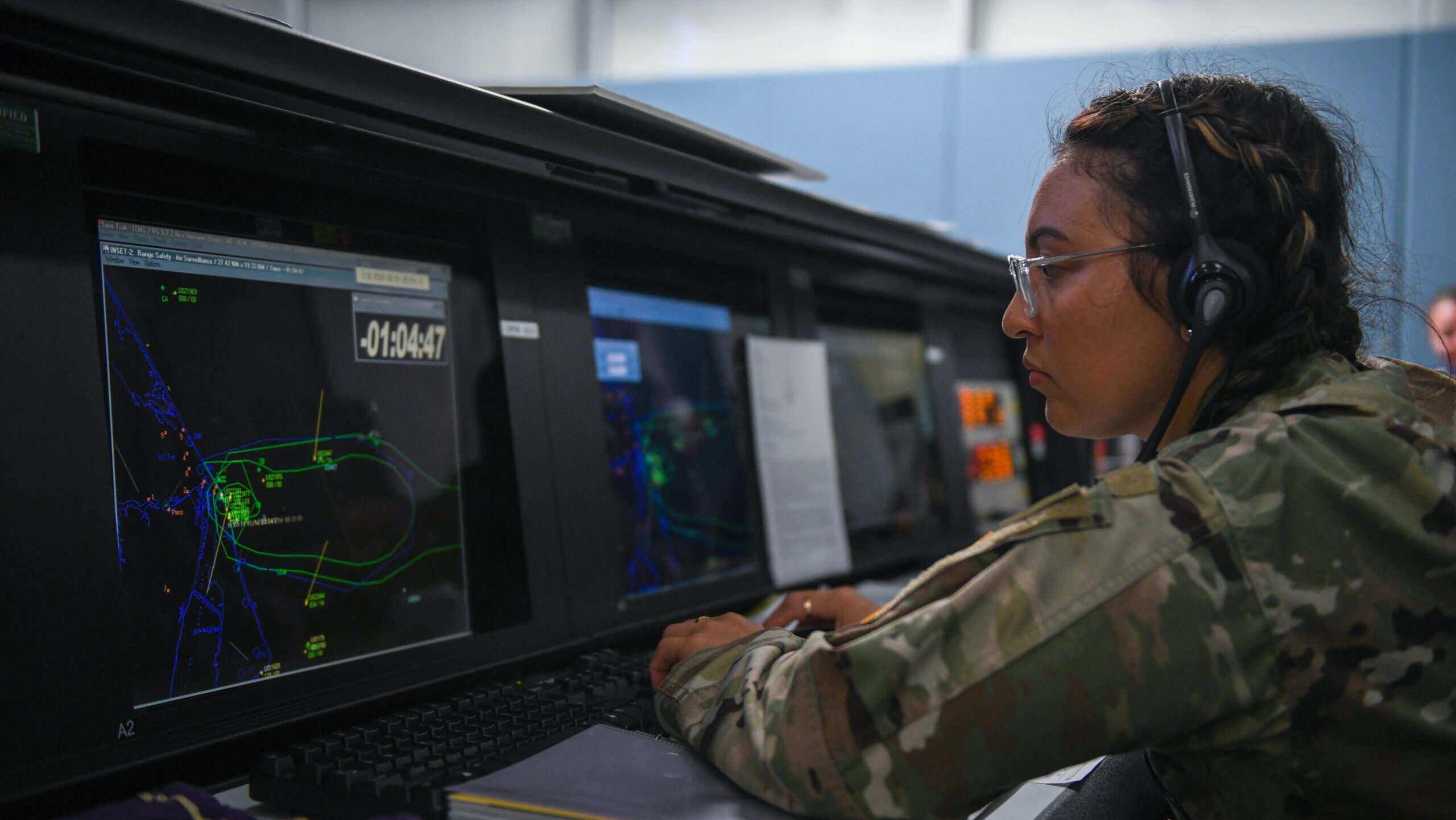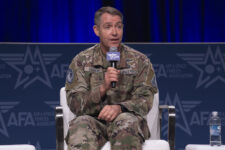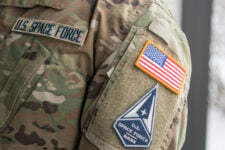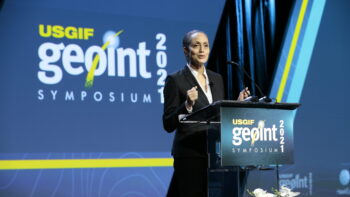
U.S. Space Force 1st Lt. Shelby Andrade, 1st Range Operations Squadron sea surveillance officer, monitors the surrounding sea at the Morrell Operations Center on Cape Canaveral Space Force Stations, Fla., Aug. 4, 2022. (U.S. Space Force photo by Senior Airman Haley N. Blevins)
AFA WARFARE SYMPOSIUM — While the Space Force is still working through the details, senior leaders are optimistic the planned shift to the use of “combat squadrons” to provide forces US combatant commands will improve both day-to-day operations and increase readiness — as well as alleviate overburdening crew members.
Lt. Gen. Doug Schiess, head of the new and innovatively named Space Forces-Space command, said Tuesday that in the past, Guardians were simultaneously being tasked to operate space systems and to train on new tech and/or get ready for new missions. This has led to “exhaustion,” he told reporters at the Air Force Association Warfare Symposium in Aurora, Colo., and the new scheme “will help with that.”
Space Forces-Space is the service’s component command that oversees Guardians working as operators at US Space Command (SPACECOM). The Space Force is responsible for organizing, training and equipping Guardians; whereas SPACECOM, as a combatant command, controls actual day-to-day operations of most US military space systems.
Brig. Gen. Devin Pepper, vice commander of Space Force Space Operations Command (SpOC), told reporters in a separate briefing on Tuesday that SpOC’s central job is “to generate ready forces to present to a combatant commander.” What is being changed, he said, is how that “presentation” happens.
“Normally we present squadrons or we present deltas,” he said. (Deltas are the Space Force equivalent of Air Force wings.) Under the new model, rather than “full up” squadrons or deltas assigned to a mission area, SpOC will provide a “mission element” subset for operational duty.
Specifically, Pepper said, under the latest “crew model” of the Space Force Generation [PDF] construct for creating “combat ready forces,” “five of the crews, whatever system they’re operating, will be in what’s called the ‘combat period,’ and the other three crews will be in what we call ‘prepared and ready’.”
Schiess used the example of the Space Force 2nd Space Operations Squadron (SOPS) to explain how the combat squadron model would work. That squadron, part of Space Operations Command (SpOC) Delta 8, provides command and control of the 38 Global Positioning System positioning, timing and navigation (PNT) satellites on orbit — 31 active, one test and six spares.
The commander of the 2nd SOPS is focused getting Guardians ready to be able to perform the GPS mission at SPACECOM, Schiess said. To provide those ready forces to SPACECOM, the 2nd SOPS commander chooses “some elements” of the squadron — “operations elements, planning elements, intelligence elements, ground system elements, all that” — to put together into a “combat squadron,” he elaborated. That combat squadron (i.e. a subset of the 2nd SOPS) is then “presented” to SPACECOM, under the command of Space Forces-Space rather than SpOC.
Those 2nd SOPS personnel and elements that do not become part of the combat squadron, however, remain under SpOC command where they will concentrate on training, testing new kit and capabilities, etc.
The Space Force is still “working through” the naming convention for a specific combat squadron, Schiess said — “does that become the 2nd Combat Squadron or 2nd Space Operations?”
But the new arrangement, he stressed, aligns Space Force with how the Air Force, Army and Navy present and deploy forces to combatant commands such as Indo-Pacific and European Command. The only difference, he noted, is that often times Guardians don’t actually deploy anywhere to do the mission, for example, many space systems are located and run out of Colorado Springs, which is also home (at least for the moment) of SPACECOM.






















